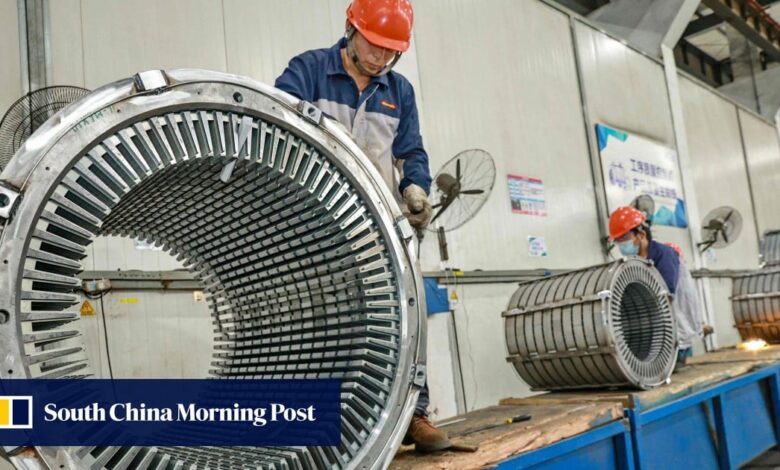China’s manufacturing expands for first time in 6 months in latest sign of stabilising economy

[ad_1]
“The survey showed a rise in the proportion of manufacturing factories reporting intensified competition, high costs of raw materials and tightness in funds. The recovery and development of the manufacturing sector still face some difficulties,” Zhao said in a separate statement on the NBS website.
He added that the government should strengthen implementation of the support policies to consolidate the recovery.
Within the official manufacturing PMI, the new orders subindex rose to 50.5 in September from 50.2 a month earlier, while the new export orders subindex improved slightly to 47.8 from 46.7 in the previous month.
The non-manufacturing PMI rose to 51.7 in September from 51.0 in August after the index moderated for five consecutive months amid an overall economic slowdown.
The construction subindex, which has been affected by the ongoing property crisis, reached 56.2, up from 53.8 in August.
Beijing has introduced a slew of supportive measures since July to stem downward economic risks as its long-term growth prospects have become a global concern.
Larry Hu, chief China economist with Macquarie, said in a research report on Wednesday that China’s growth had rebounded from the trough in the second quarter.
“The economy started improving from the third quarter of this year, although the dip in July suggests that the road to recovery is a bumpy one,” he said.
He said he expected China to grow 5.2 per cent this year if the pace of recovery is not disrupted.
China’s central bank pledged to provide more powerful policy support for the real economy and property market.
Chinese leaders vow more support for advanced manufacturing drive
Chinese leaders vow more support for advanced manufacturing drive
In another sign that China’s economy has started to stabilise, industrial profits, a major gauge of the operations of medium and large industrial firms, reported the first year-on-year rise this year in August.
August profits rose 17.2 per cent from a year earlier, compared to a drop of 6.7 per cent in July and a plunge of 19.2 per cent in March, according to data released on Wednesday by the National Bureau of Statistics.
But some remain cautious, given the property slump, financial difficulties of local governments, a bleak export outlook and low confidence in the private sector, while Beijing has refrained from a big-bang stimulus to drive up growth in the short-run.
Lu Ting, chief China economist with Nomura, said major activity data was expected to stabilise in September, but China still faced risks in the property and services sector.
“The apparent stabilisation of growth reduces the likelihood of more aggressive stimulus measures from Beijing in the near term, although Beijing may be compelled to step up policy support again,” Lu said in a report earlier this week.
Additional reporting by Ji Siqi
[ad_2]
Source link





